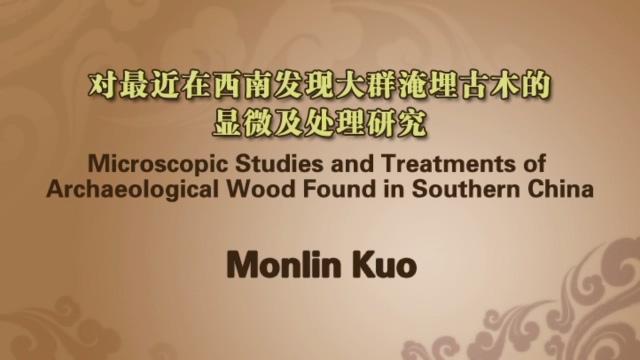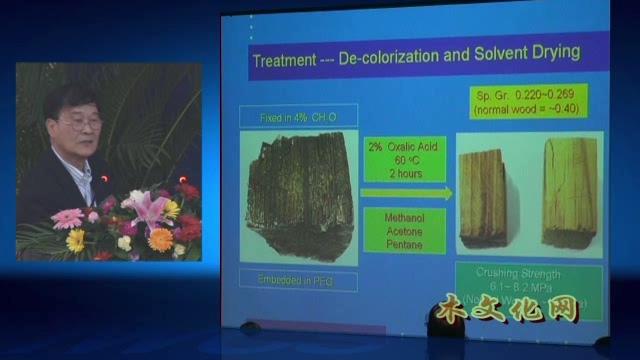会议名称:2010木文化国际研讨会——古木文化产业和遗产保护与修复
会议时间:2010年10月23日-24日
会议地点:中国·陕西
报告嘉宾:Monlin Kuo
副教授 美国爱荷华州立大学
报告摘要:A submerged ancient village was discovered in 2008 about two meters under agricultural fields in western Yunnan province. This 3,000 to 5,000 years old village contains thousands erecting round timbers. All of limited number of samples studied was found to be a local soft pine species, P. kesiya var. longbianensis. These pine timbers were heavily deteriorated as indicated by low specific gravity ranging from 0.220 to 0.269 and low crushing strength ranging from 6.1 MPa to 8.2 MPa (> 20 MPa for normal wood). Microscopic studies indicated that bacterial surface erosion was the main type of wood deterioration although bacterial cavitations and tunneling also were observed. Soft rot and decay by basidiomycetes were not detected, suggesting the site was suddenly submerged in a catastrophic event. Hyphae of blue stain fungus were found in rays and adjacent tracheids, which are believed to be pre-existing prior to submerge. Unearthed wood samples stored in water darkened overtime, but dark coloration could be removed by treatment with 2% oxalic acid aqueous solution. Impregnating decayed wood with a phenol-formaldehyde resin increased wood sp. gr. from <0.269 to 0.45 and crushing strength from <8.2 MPa to 13.6 MPa.
责任编辑:iwcs24P


 10,536
10,536

